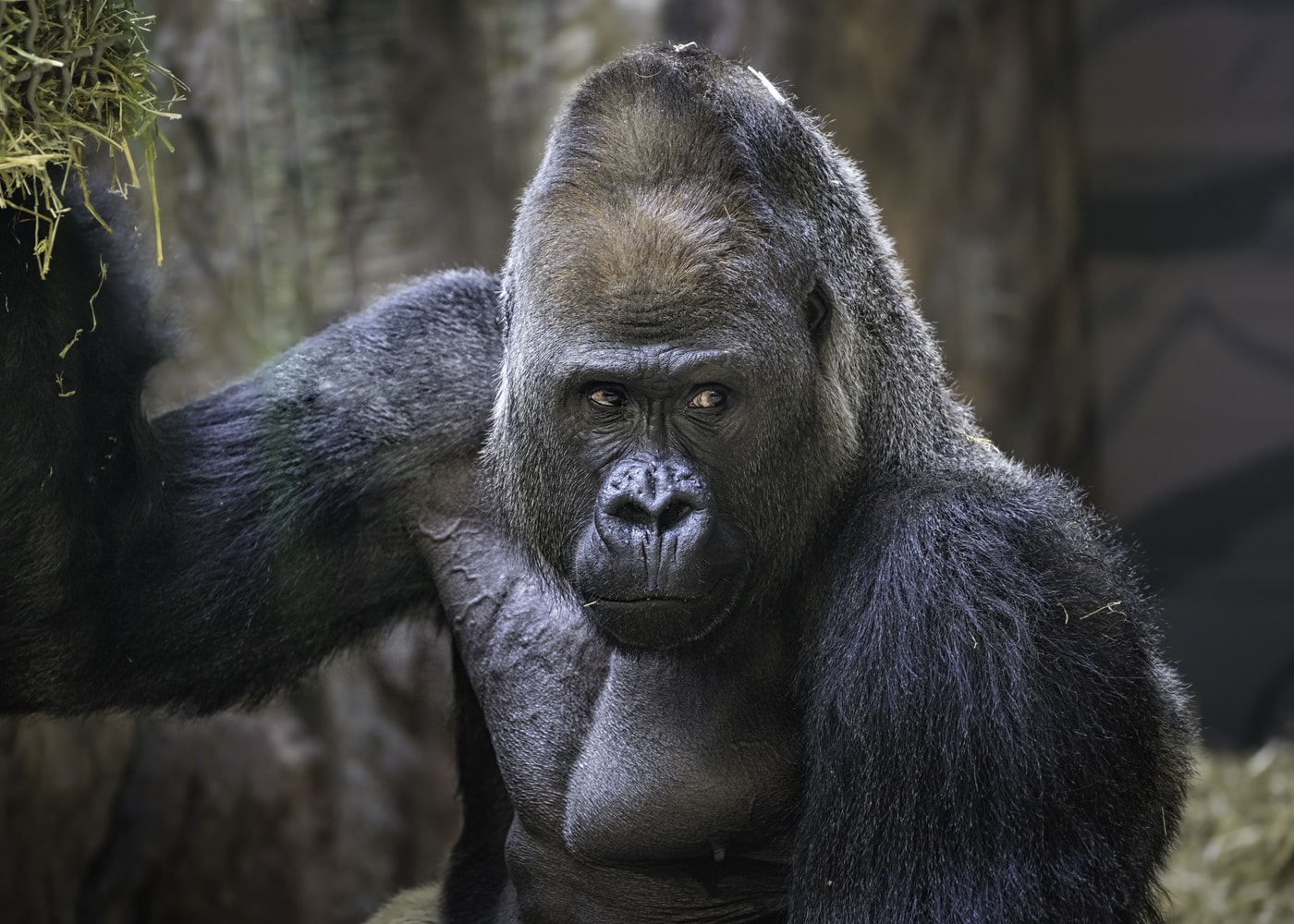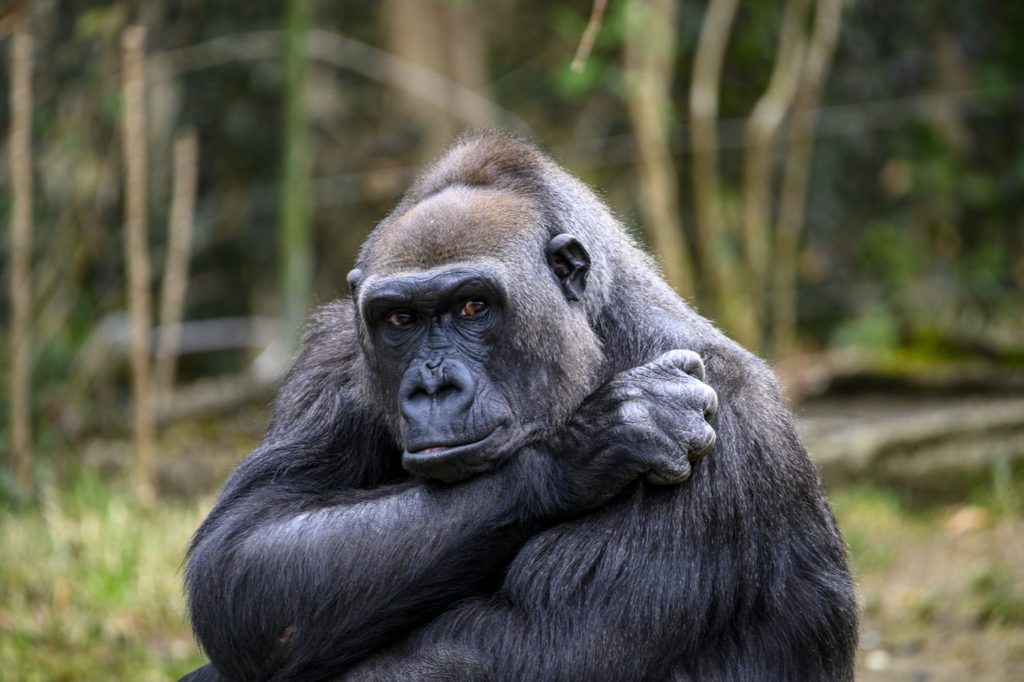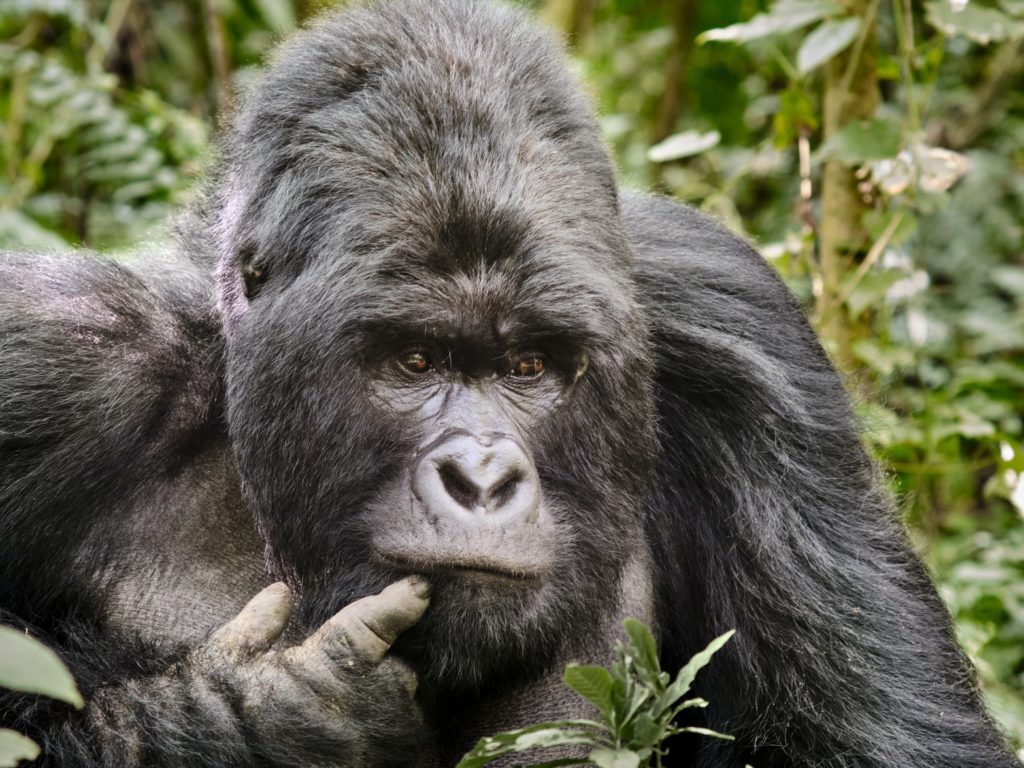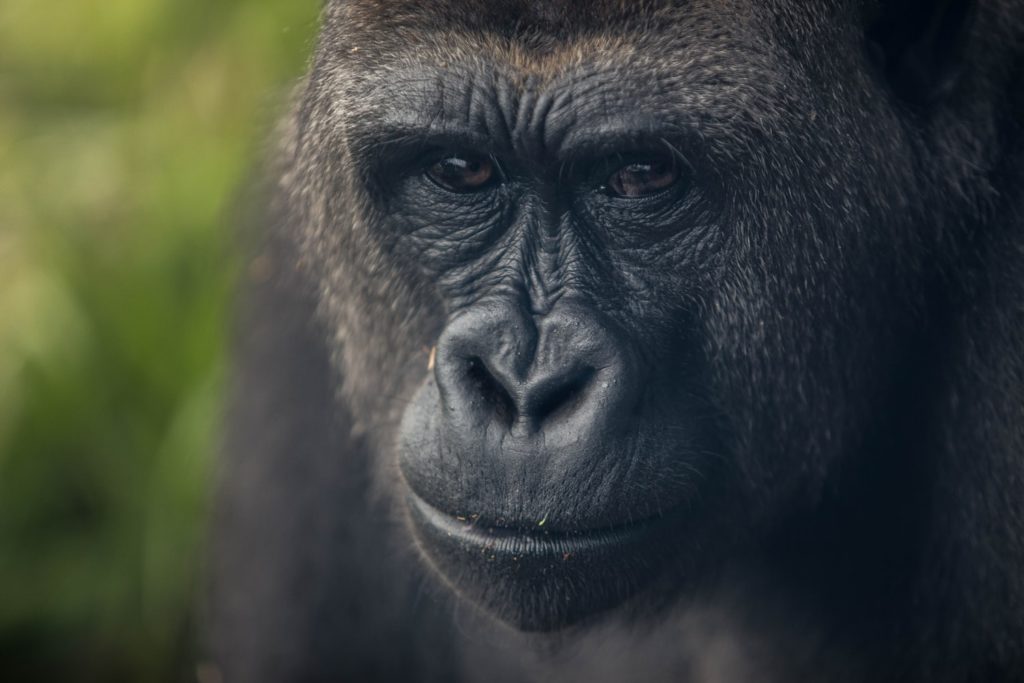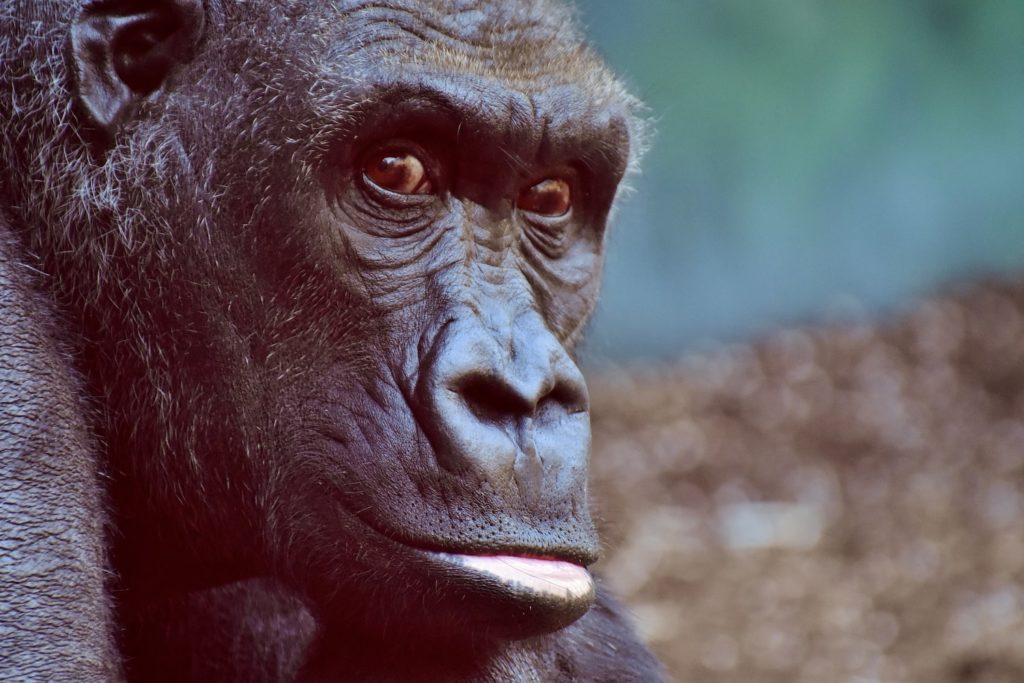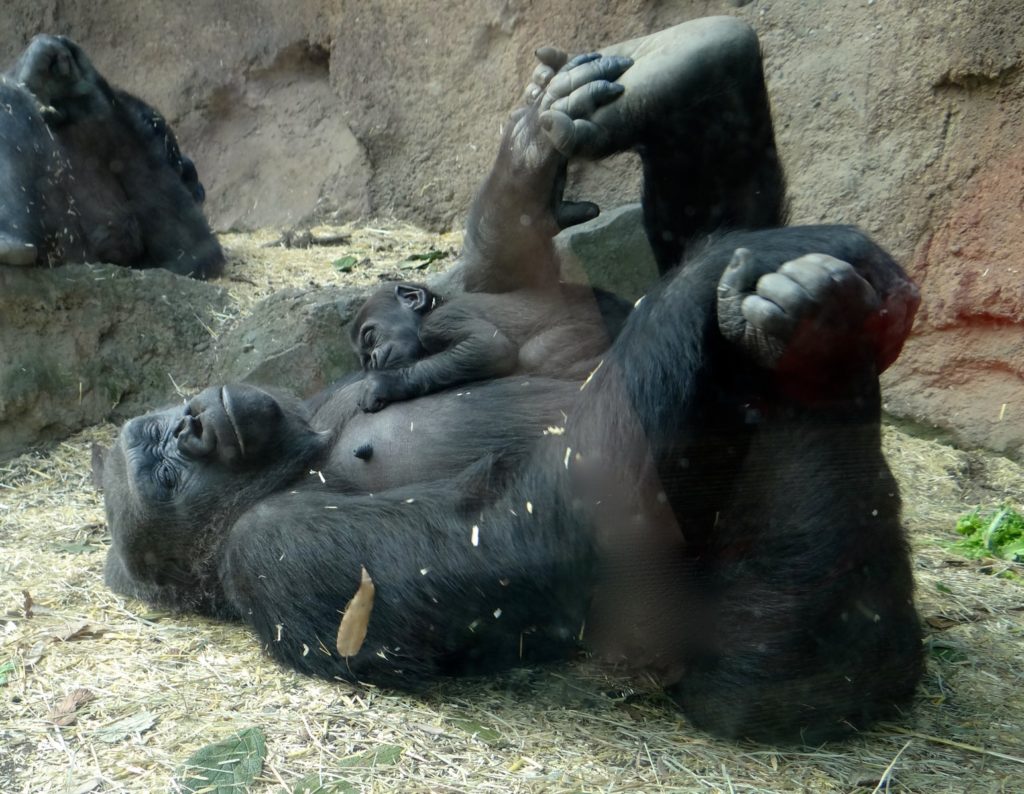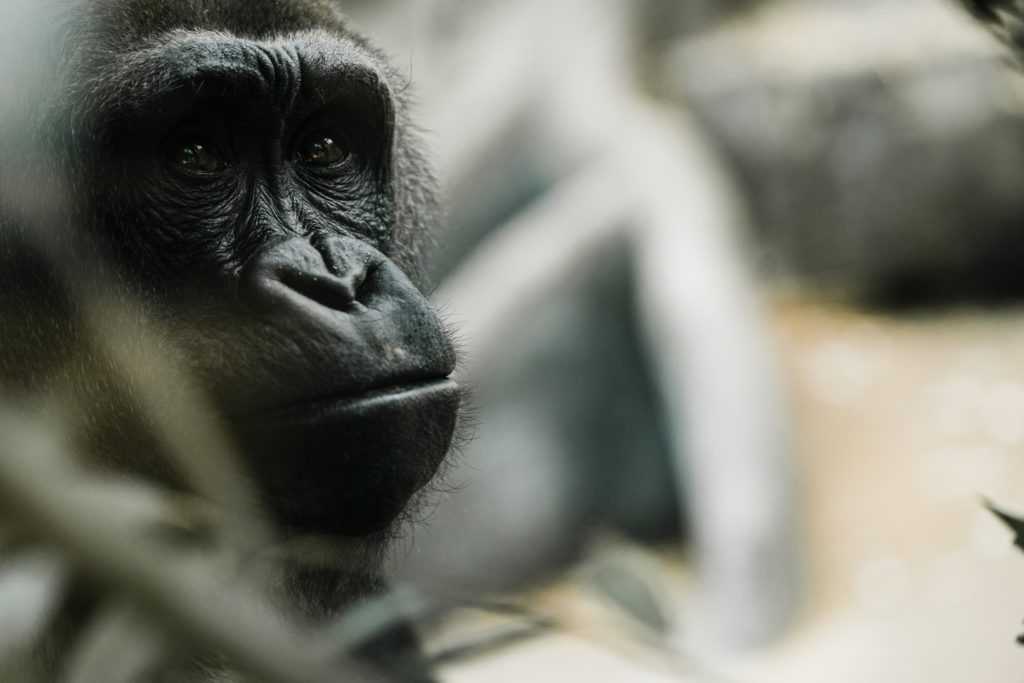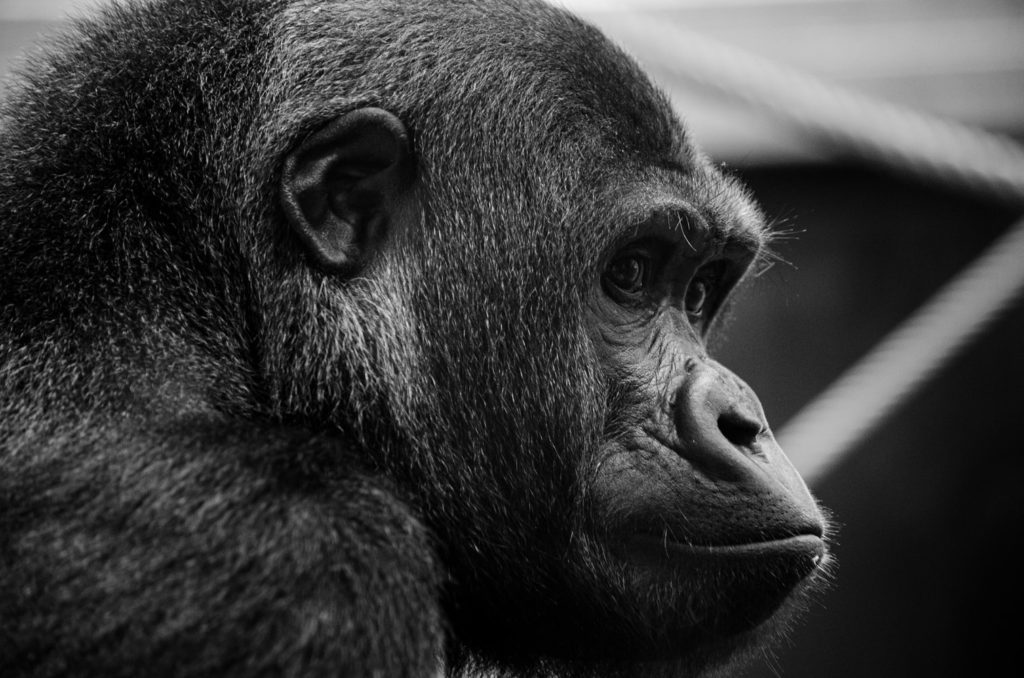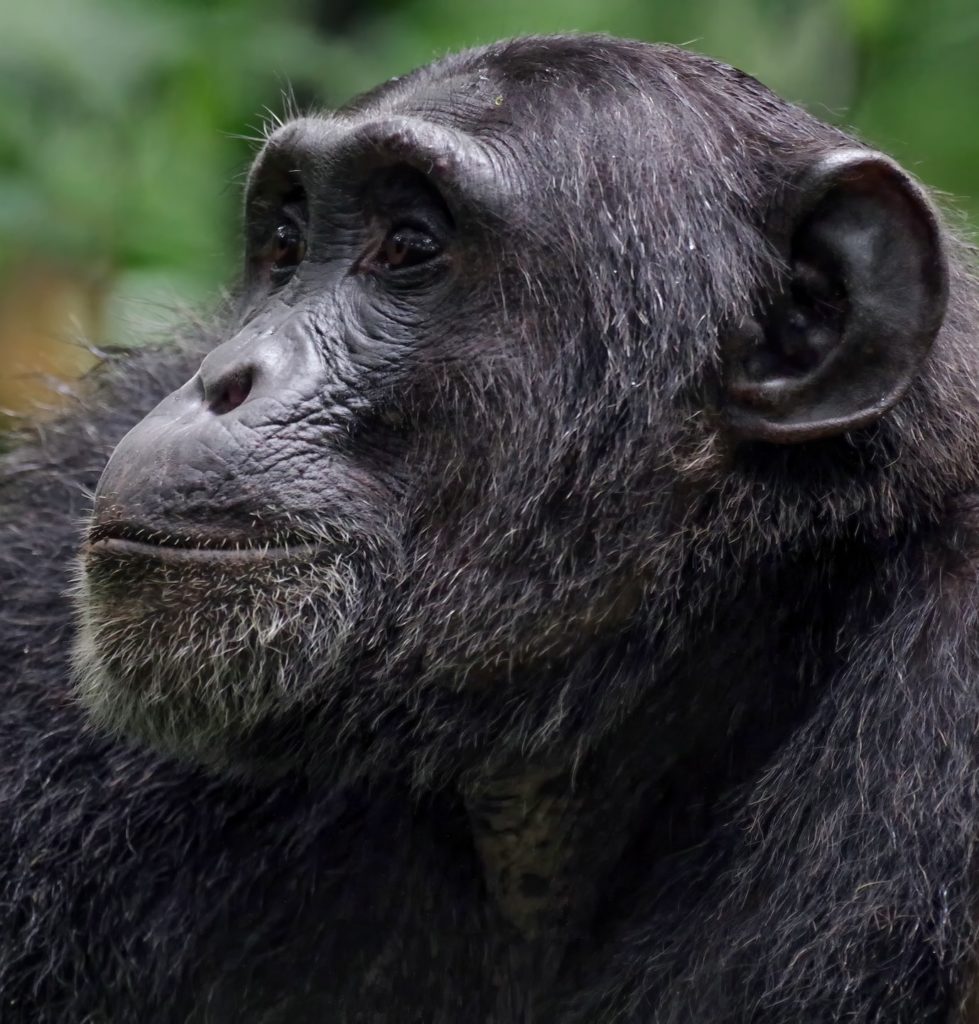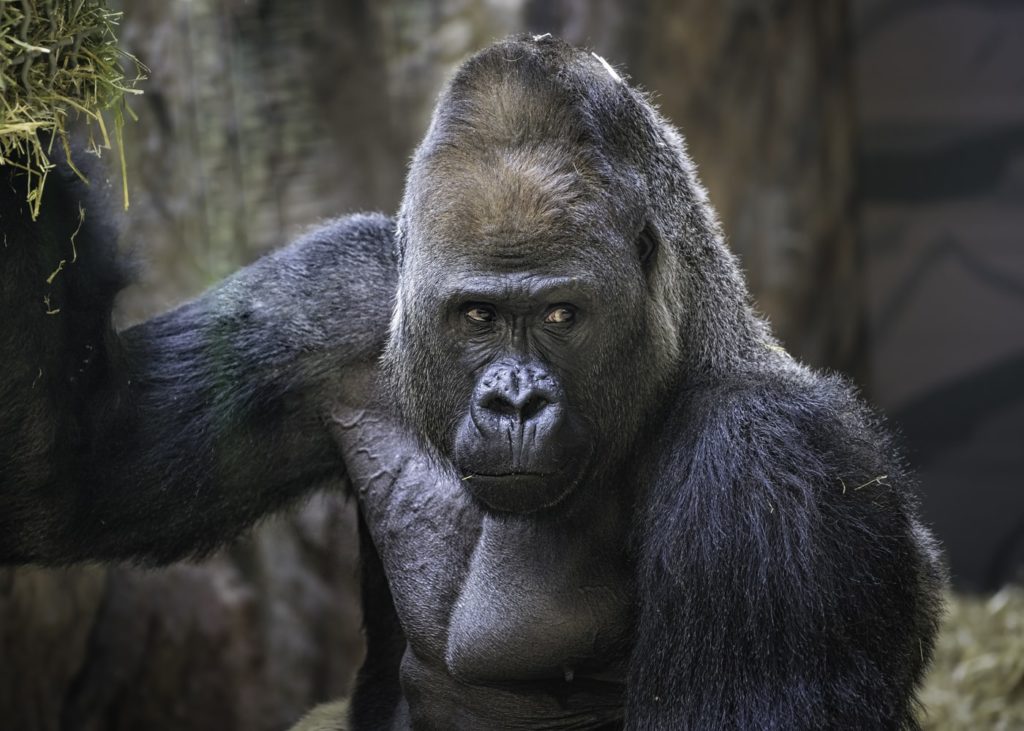The hominids closest to humans
Gorillas are the largest apes that live on earth. We classify them as hominids. They are quiet animals, spending time in family groups. We classify them as hominids because they have a lot in common with us. They are characterized by great intelligence, a tendency to adopt an upright posture and the ability to manufacture tools. Despite the fact that they are large and strong animals, they are in danger of becoming extinct.

- Gorillas belong to a group of animals known as primates. They are the largest species of primates.
- Gorillas are the indigenous people of Africa. Both species of gorillas – eastern (Gorilla beringei) and western (Gorilla gorilla) gorillas – occur in equatorial Africa.
- Gorillas live in tropical forests in Africa. We can meet them in two separate areas.
- East African gorillas live in Rwanda, Uganda, and the eastern Democratic Republic of the Congo.
- The western population is found in Nigeria, Cameroon, Central African Republic, Equatorial Guinea, Gabon, Congo, Angola, and the western borders of the Democratic Republic of the Congo.
- Gorillas in the wild are found only in Africa, and primarily in the areas of Nigeria, Congo, Uganda, Rwanda, Gabon, and Angola.
- Gorillas eat about 40 pounds of food daily, and these are mainly fruits, roots, plants, shoots, and tree bark. This species also often shows a tendency to coprophagia, i.e., eating its own excrement.
- Gorillas only have one enemy in the wild, and that is the leopard.
- Males are often twice the size of females.
- Gorillas feed mainly on plants. They eat seeds, leaves, and stems. A small part of their diet consists of termites and caterpillars.
- Gorillas begin communicating with their mothers when they are incredibly young.
- Males grow up to about 5.5 feet (1.7 meter) in height. Females grow up to 4.6 feet (1.4 meter) in height.
- Around 1,063 Exist in The Wild
- Gorillas are generally calm and passive animals.
- Gorillas are neophobic animals. They are extremely sensitive to changes and especially to changes in their environment. It is why any changes in their habitat impact them a lot.
- While adult male gorillas can weigh up to 195 kilograms, they have not achieved this by eating protein. Gorillas are mostly herbivores – they eat about 140 different species of plants and need to eat about 27 kilograms of food a day.
- Gorilla families tend to stick together. Gorillas laugh, play and even cry. They interact just like humans.
- At night, they make nests of grass and leaves for sleeping.
- They have very long arms. They are longer than their legs.
- Gorillas have hands and feet like humans, including thumbs and big toes.
- Since gorillas live in places with a lot of vegetation, communication between them is important.
- Gorillas do not drink much water because the water they eat is sufficient for them. The latter are also fond of the alcoholic aftertaste of fermented delicacies, hence the conclusion of scientists that gorillas are prone to stimulants.
- Some captive gorillas have learned to use sign language to communicate with humans.
- Their herds usually consist of one male and several females.
- Male herds fight to take over the enemy herd.
- they can lift up to 5 times their weight.
- Gorillas live up to about 35 years. However, they can live longer, up to 50 years in captivity.
- Young gorillas play together, bite and wrestle.
- After chimps and bonobos, gorillas are the next animal to humans in terms of their genetic makeup. They can laugh, express sadness as well as other emotions. Humans and gorillas share 98.4% of our DNA. A separation of just 1.6%. Given that they can use tools, learn language, express emotions as well as get used and friendly to a person, they are indeed our close cousins.
- Yes, gorillas are in danger. Some time ago, the Ebola virus killed many of them.
- An adult male gorilla is the size of a human but is 3 times heavier.
- Gorillas, unlike chimpanzees and orangutans, tend to sleep in their nests on the ground. Gorillas build nests for day and night use.
- Gorillas are the largest apes living today that are considered hominids. This means that they have an upright posture, are intelligent, and are also able to manufacture and use tools.
- Gorillas, thanks to their size and formidable face, tend to be extremely dangerous. However, this is not true. In fact, gorillas are mild-mannered and herbivores.
- The largest gorilla in the world was the height of an adult tall male, 6 feet (183 centimeters) to be exact. His weight was also impressive as he was 496 lb. (225 kg).
- Interesting facts and information about gorillas for children and adults
- Gorillas love to spend time with other members of their species and communicate with them not only through sounds, but also through facial expressions.
- When a gorilla stands upright and begins to punch on its chest, just like King Kong and gorillas in cartoons, it means that it feels threatened or, on the contrary, is in a great mood and having fun.
- Due to their large size, males prefer to stick to land, while young gorillas and lighter females love climbing into trees.
- Their longer and thicker body hair help them stay in cold high-altitude places. Living in tropical climates which are wet much of the year, gorillas are able to stay warm due to the hair covering their bodies. This is even more vital for the mountain gorillas that stay in high altitude places of around 2,320 meters above sea level.
- Like humans, gorillas have fingerprints, and the fingerprints of one gorilla are unique.
- Gestation lasts 250 days, and baby gorillas are born with their eyes open and sleep with their mother for five years.
- The etymology of the word “gorilla” goes back to the Greek language and the word “gorilla”, which meant “a tribe of hairy women.” They were called by a Carthaginian sailor who came to today’s Sierra Leone in the fifth century BC.
- In the 1960s, a completely unusual gorilla was captured in Equatorial Guinea. It was an albino gorilla with quite white fur and fair skin. He was transferred to the Barcelona Zoo and baptized with the name Snowflake, or snowflake. To date, he is the only known albino among gorillas.
- Gorillas are threatened with extinction, despite the fact that the largest group of lowland gorillas is as many as 100,000 individuals. Under natural conditions, they live an average of ten years shorter than in confinement, where they live up to sixty years.
- Gorillas live in small family groups called troops. These gorilla families usually consist of about10 individuals, with one silverback as the leader.
- Gorillas can learn a specific sign language and use it to weave extensive narratives. A gorilla described the death of his mother in this way at the hands of poachers.
- The gorillas must be happy to see when they eat, because they like to hum and compose new songs during this activity.
- The male gorilla’s back is covered with white hair. It is then said to have “silverback”, which is a silver back, and this is not a sign of aging at all.
- In the 1980s, Jambo’s gorilla from Jersey Zoo had the opportunity to prove just how protective gorillas are. A five-year-old child who lost consciousness ran into his runway. The gorilla took great care of the boy.
- A mountain gorilla’s eyes are dark brown, framed by a dark ring around the iris. Gorillas are said to have a singular eye color of dark brown, unlike humans who have many eye colors. Some domestic animals also have more than one eyes color, but this is rare in wild animals.
- Under natural conditions, the greatest threat to the gorilla is the leopard, which can remain unnoticed until the last moment, and thanks to its strength it can deal with an opponent much larger than him.
- Silverbacks are in charge of ensuring the troop’s safety. Every troop is headed by a silverback which is in charge of leading the whole troop to different places for food. More importantly, the silverback’s role is in protecting the members of his troop even if he has to die while doing it.
- An inadequate diet of gorillas that are not living in the wild can lead to serious heart disease, so caregivers take great care to provide them with what they would look for in the wild.
- The first scientific description of a gorilla was made by the American missionary Thomas S. Savage in 1847.
- We can meet gorillas in various environments.
- They inhabit both high mountains (they can be found at an altitude of over 4000 m above sea level) and mountain forests located about 1.5 km above sea level. and lowlands and swamps.
- There are two species of gorillas: western gorillas and eastern gorillas. Both populations are separated by approximately 1,000 kilometers.
- Adult gorillas lead a terrestrial lifestyle, although they are genetically adapted to spending time in trees. Only young representatives of these animals are happy to spend time in the treetops.
- Gorillas are herbivores. They feed on leaves, fruit, shoots, sprouts, roots, and tree bark.
- Gorillas also have a unique nose pattern that is specific to each gorilla. Since you will not see their fingers much closer, the nose pattern (nose print) is what you can use to distinguish between two similar looking individuals.
- They mostly feed during the morning and evening. Gorillas will feed in the morning and then nap during the day as the infants play and snack around until the evening when they all eat some more.
- Insects constitute 1-2% of gorillas’ diet.
- Gorillas spend the night in lairs made of leaves and branches.
- Gorillas are pregnant for 8.5 months. The mother raises her young from 3 to 4 years and after that time she is able to get pregnant again.
- The life expectancy of gorillas is 30-40 years. In captivity, these animals live up to 50 years.
- The typical territory of gorillas is between 5 and 30 km².
- The longest-lived gorilla on earth was Massa from the Philadelphia Zoo. He lived to the age of 54.
- Gorillas are able to lift a weight of 2,160 lb. (980 kilograms).
- Almost all gorillas have blood type B.
- Gorillas use stones as simple tools to crack nuts.
- In the Kent Safari Park, England, lives a gorilla named Ambam, who has learned to move upright.
